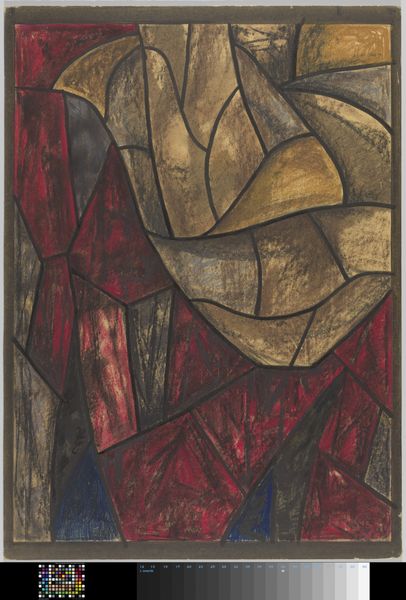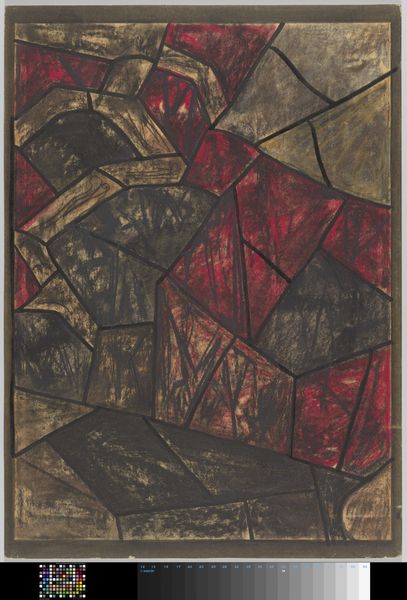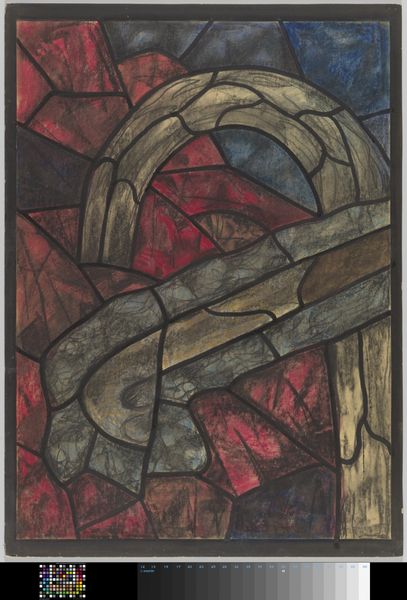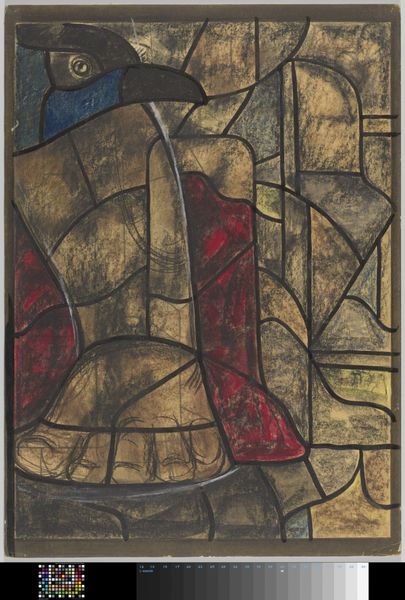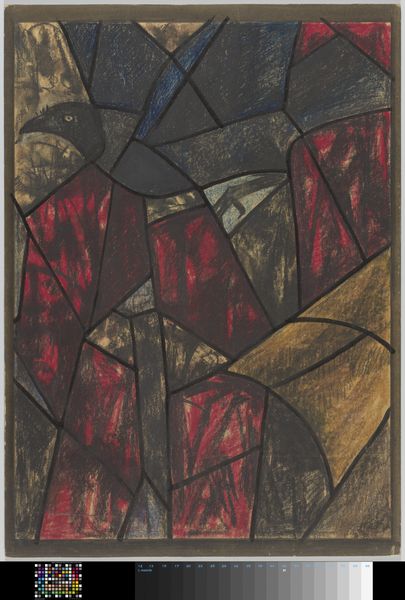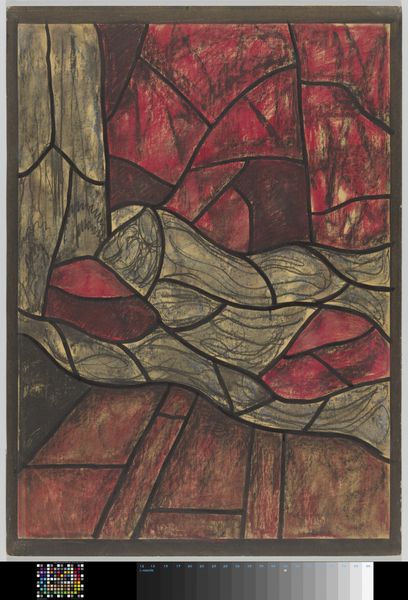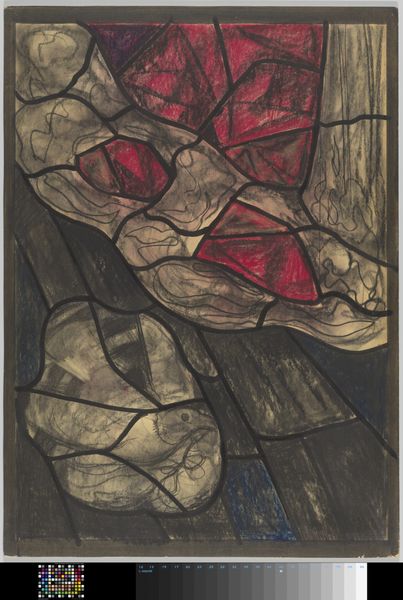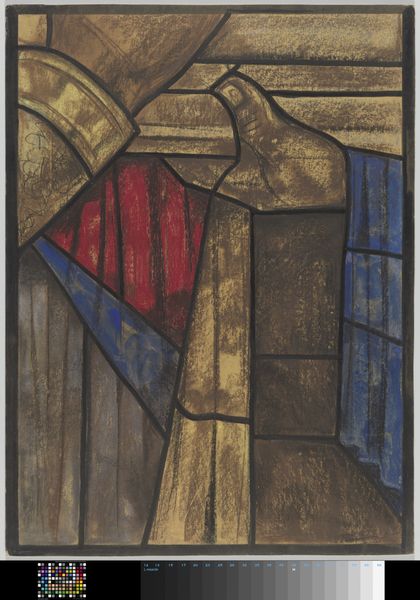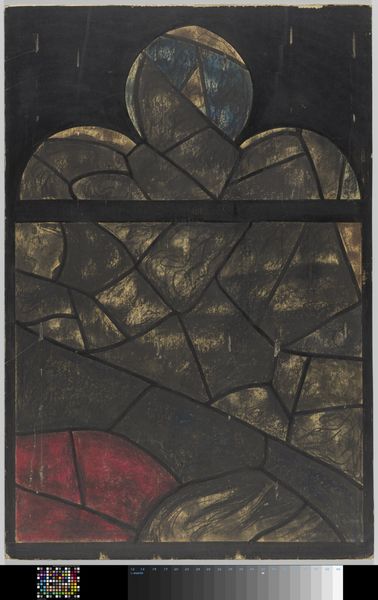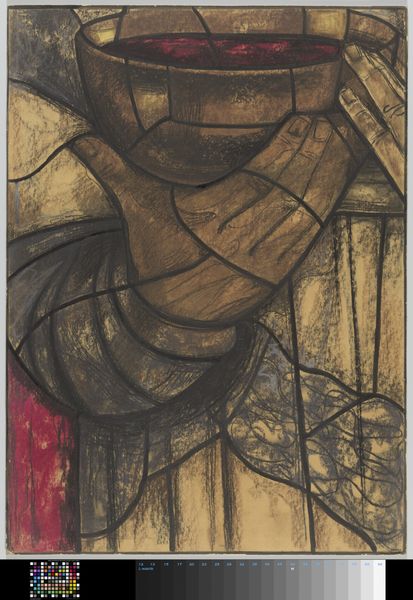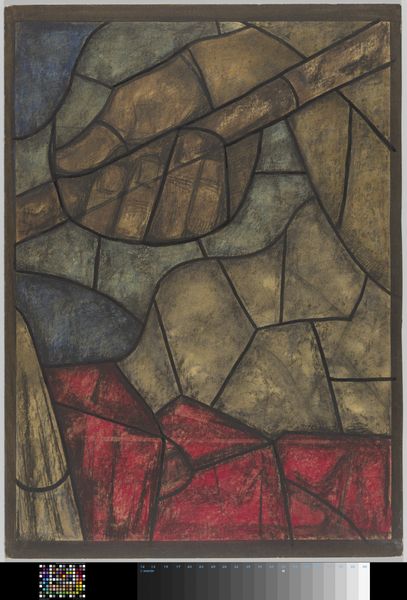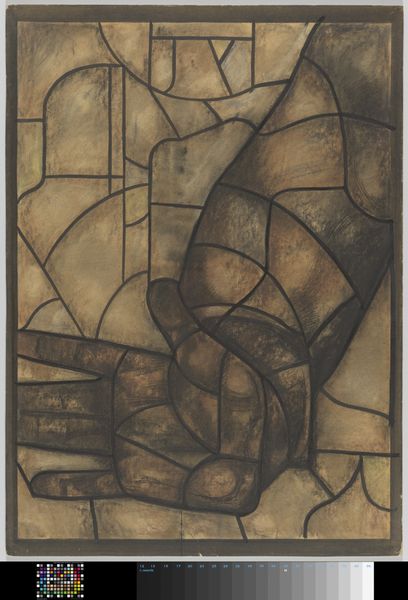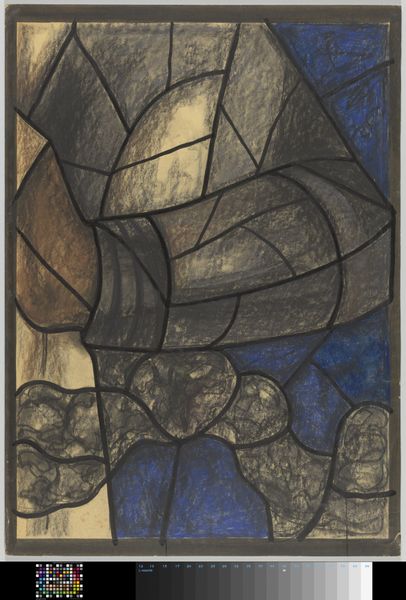
Ontwerp voor raam in het Noordertransept in de Dom te Utrecht c. 1934
0:00
0:00
Dimensions: height 1215 mm, width 800 mm
Copyright: Rijks Museum: Open Domain
Richard Nicolaüs Roland Holst created this design for a window in Utrecht Cathedral using chalk and graphite. The cathedral itself, a potent symbol of Dutch religious and political life, had a history stretching back to the medieval period, but Holst was working in a moment of intense social change and artistic experimentation in the early twentieth century Netherlands. Consider the image: a large serpent coiled around a staff. Holst’s image recalls the biblical story of the bronze serpent, a symbol of healing and salvation. Yet, his style, with its bold lines and flattened perspective, departs sharply from traditional religious art. This wasn't necessarily conservative religious imagery. Holst was deeply involved in socialist politics and the Arts and Crafts movement, both of which sought to reform society through art. In the context of the Netherlands, it is an era that saw attempts to synthesize spiritual values with social progress. To get a better understanding, one might explore the archives of socialist organizations and religious institutions to find out about the cultural debates of the time. The meaning of art always depends on its social and institutional context.
Comments
No comments
Be the first to comment and join the conversation on the ultimate creative platform.
